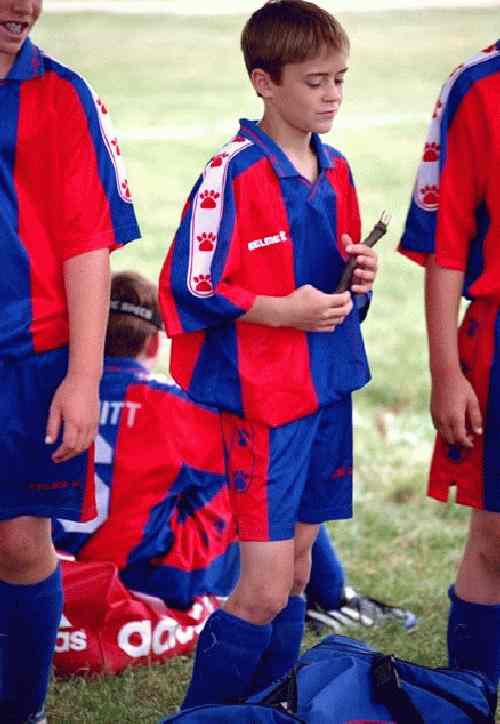
Figure 1.--Soccer uniforms have allways involved jersies, short pants, and kneesocks. The jersies and shorts in recent years have become large and baggy. The kneesocks have not changed greatly. |

|
The soccer uniform has no headgear. Primarily because of the need to head the ball. Bous and girls wear the same simple uniform, a jersey, short pants, and kneesocks. Soccer is the only sport for which kneesocks are always worn. The reason for knee socks still being universal in soccer, is that they are necessary to keep the shin protectors (the only required protection) in place. Cleated boots are also worn. The jersies varied. Some had collars, most did not. Gernerally they had crew necks, but "V" necks were also worn. A goalie may add gloves and wears a different jersey than the rest of the team so he can be easily identifided.
The soccer uniform has no headgear. Primarily because of the need to head the ball. This is a very important aspect of play and could not ne done with a cap. Some specialists are concerned about younger children heading the ball. We notice some boys wearing headbands.
We habe noted quite a variety of garments worn as soccer jersies. Most have crew necks, but some have "V" necks. Some had collars like Rugby or polo shirts. Notice the collar here, but there are no buttons like a Rugby shirt (figure 1). The jersies are done in virtually any color abnd in a variety of materials. Sometimes they are the same color as the shorts and others arein contrasting colors. Normally there are numbers on the bsack. Detailing varies widely. A goalie may add gloves and wears a different jersey than the rest of the team so he can be easily identifided. This is presumably because the rules for the galie are different than those for the other players. He can pick up the ball.
From the earliest days of competitive soccer that we have noted in the early 20th century, short pants have been used for soccer. W have never noted soccer uniforms done in any other kind of pants. Sometimes bous wear trainers or sweat panrs in cold weather, but they always take these pants off to atually play a match. I'm not sure about the pants worn in the 19th century yet. The basic differece we have noted over time in the 20th century has been the length of the shorts. They were very long in the early 20th century, but began to become shorter after World War I. A very short style was worn in the 1970s and 80s, but soccer shorts became longer in the 1990s--looking much like the early years of soccer. There have also been variations in material, color, detailing, and styling. Some soccer shorts are quite plain. Others have very elaborate styling. Some soccer shorts were plain cotton and others were made in very fancy satin0-like material.
The dominant type of hosiery worn for soccer is kneesocks. We are not precisely why this is. Unlike Scouting where kneesocks were useful protective garments for hiiking, we see no real utilitarian benefit from kneesocks. The one factor we see here is that kneesocks cover shin gusards. They are not needed for the shinguards, but the uniforms perhsaps look better when kneesocks are worn over the kneesocks. We suspect that kneeesocks are essentially the residual influence of the fact that kneesocks were commonly worn with short pants at the formative era for soccer. We note that during the winter that tights are now worn, often with kneesocks when playing soccer. This is especially common in Germany. We note that ankle sicks are not commonly worn for soccer, at least as part of team uniforms.
Cameroon's soccer team in 2003 adopted a one-piece soccer suit. They ran into trouble with the FIFA which did not approve of their uniform. I have never noted boys wearing this style of soccer kit. They had trouble with FIFA earlier for having a uniform with a sleeveless top. In reading soccer discussion forums some people pointed out that one advantage of the close-fitting one-piece uniform was that it makes it much more difficult for opposing players to grab a player's jersey. Compare Cameroon's uniform to the boys on the HBC soccer page here and you can see what a problem the loose and floppy style can cause. Soccer uniforms after World War II became much more trim fitting. Uniforms now are quite baggy, very easy to grab hold of by the opposing players.
The principal shoe worn for soccer was a cleated low-cut shoe commonly referred to as a boot. There are, however, three different types of soccer shoes: 1) screw on cleats, 2) molded cleats and 3) flats (indoor soccer shoes). The indoor soccer shoes are essentially soccer-style sneakers. They are worn not only for soccer, but also are popular for casual wear.
Navigate the Boys' Historical Clothing Web Site casual pages:
[Return to the Main soccer uniform page]
[Return to the Main sport page]
[Camp shorts]
[Clam diggers]
[Cord shorts]
[Jeans]
[Jump suits]
[Koveralls]
[Lederhosen]
[Pinafore]
[Shortalls]
[Smocks]
Navigate the Boys' Historical Clothing Web Site:
[Return to theMain short pants page]
[Introduction]
[Activities]
[Biographies]
[Chronology]
[Clothing styles]
[Countries]
[Essays]
[Bibliographies]
[Contributions]
[FAQs]
[Glossaries]
[Satellite sites]
[Tools]
[Boys' Clothing Home]
